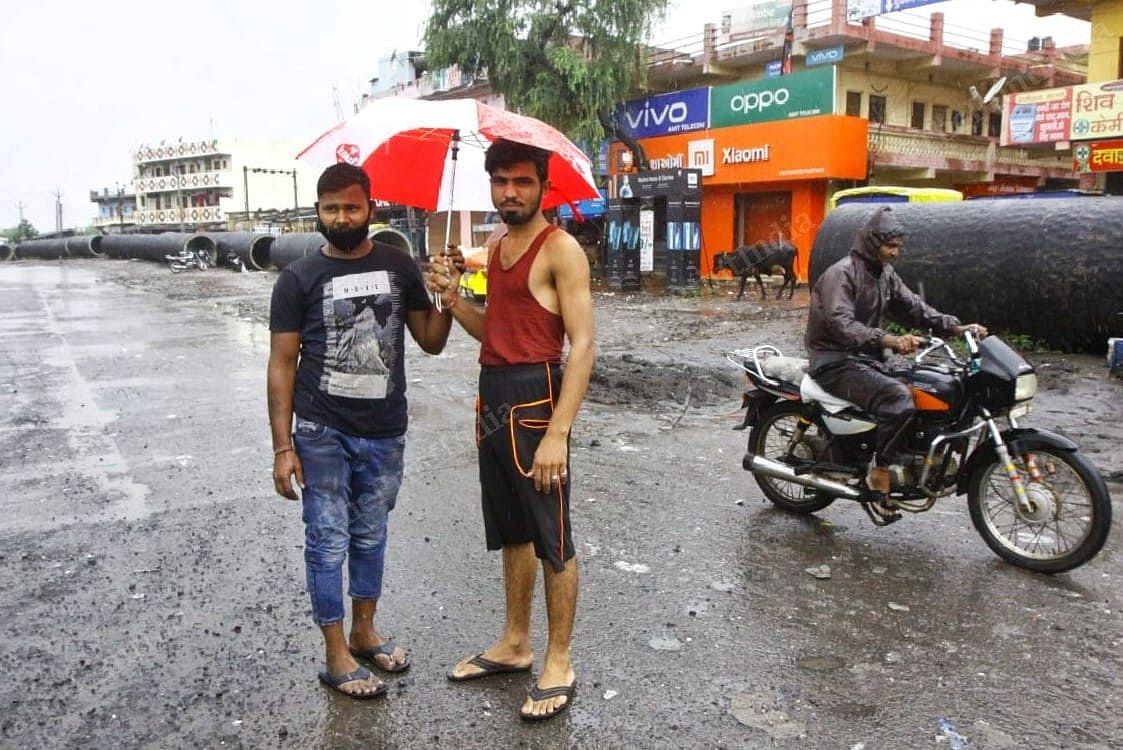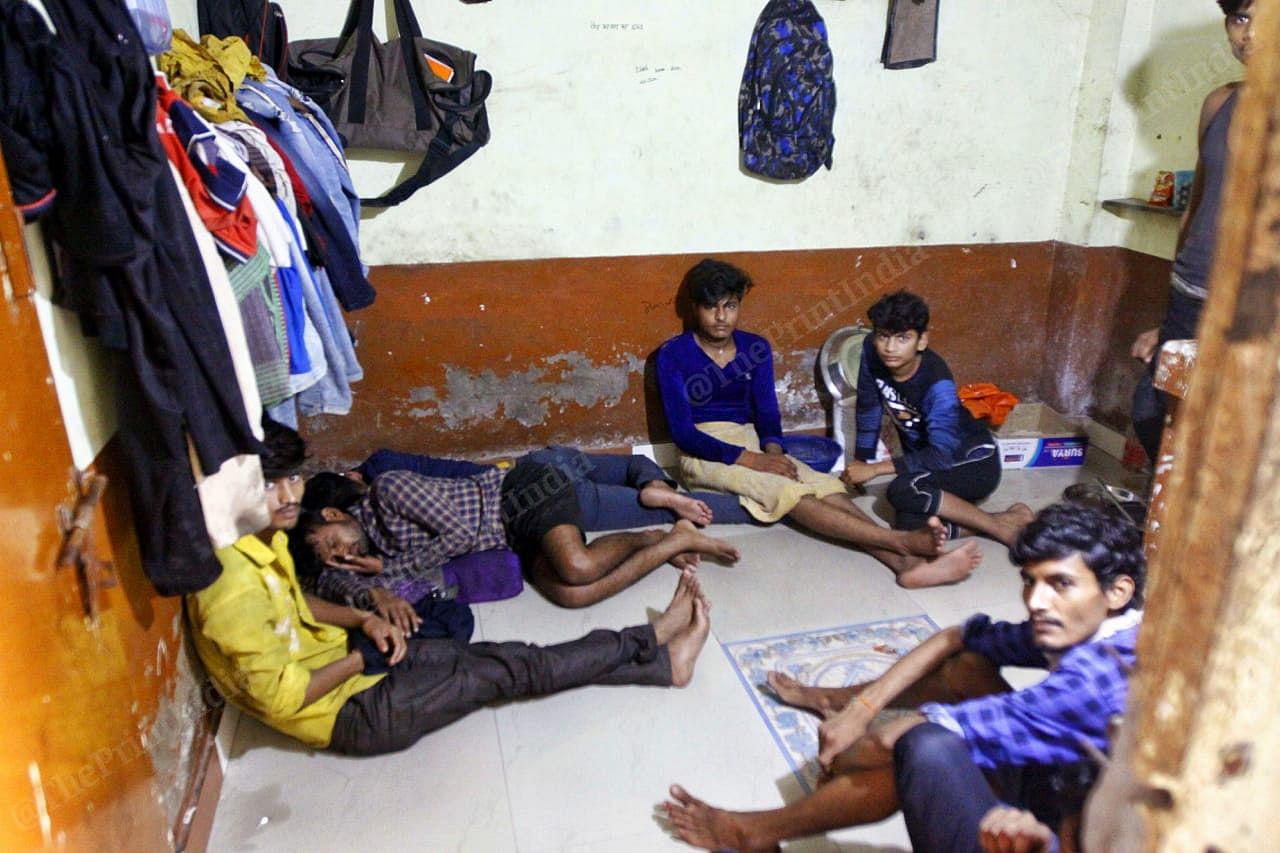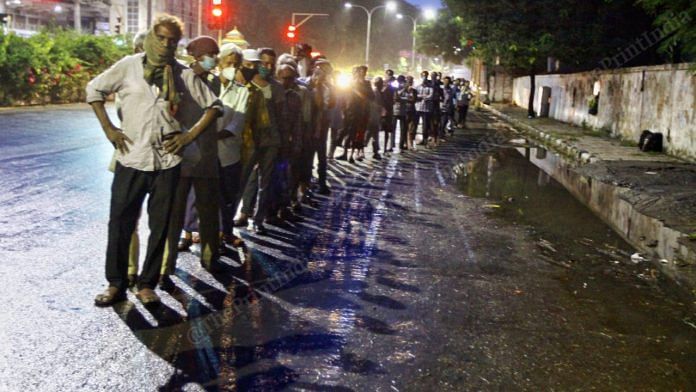Surat: Only 10 per cent of Surat’s migrant workforce has returned to the city so far after the Covid-induced lockdown, and nearly 70 per cent are expected back either in October, or after Diwali in November.
Surat, a major manufacturing hub, saw an exodus of over 18 lakh migrant workers after the lockdown was announced in March. The city is home to a large number of textile, diamond and chemical industries, and thus it sees a high influx of migrants from Uttar Pradesh, Odisha, Rajasthan, Bihar, West Bengal and Jharkhand. A UNESCO report from 2013 had found that 58 per cent of Surat’s population were internal migrants.
“So far, only 10 per cent migrant workers have returned to the city,” Kamran Ahmed Usmani, president, Gujarat Textile Sangharsh Labour Union, told ThePrint. “We are expecting at least 70 per cent of the workers who had left to come back by October or November, or after Diwali.”
Civil rights activist Krishnakant Chauhan of the People’s Union for Civil Liberties in Gujarat, added, “Before the lockdown, over 20 lakh workers were employed in the city. After the lockdown, 18 lakh migrant workers went back to their home states.”
Gujarat Chief Minister Vijay Rupani, in an interview to ThePrint earlier, had asserted that migrant workers were returning and that industries had resumed operations.
On the ground, however, things are different. A majority of the factories are working at only 20 per cent of the production capacity. Workers who have returned to Surat told ThePrint that a lack of transport was a major reason behind others not coming back.
Also read: Vadodara’s rainwater harvesting project could save around 10 crore litres this monsoon
Lack of transport & locked factories
Migrant workers Vivek and Pookhraj came back to Surat from Bhilwara, Rajasthan, over two months ago.
“We had to pay a hefty amount for a train ticket to come back. I paid Rs 1,300,” said Vivek, who works in a textile industry in the city’s Sachin Industrial Area. “But not coming back wasn’t an option since I needed to earn money to repay my loans, which have just been piling up since the lockdown was announced.”
However, unlike Vivek and Pookhraj, many workers cannot afford a train or bus ticket back to Surat.

Usmani said this was a major reason for the labour deficit.
“The biggest reason behind migrant workers not returning is the availability of transport,” he said. “Currently, only one or two trains are being deployed daily, which won’t make much of a difference. In order for the industries to revive, we need the government’s intervention to bring our workers back.”
Activist Krishnakant, meanwhile, pointed to factories either not running at all, or functioning at a fraction of their capacity. “Most of the factories are shut,” he said. “They are only running at 20 per cent production. There is no incentive for labourers to come back to the city right now.”
Rahul, a migrant worker from Satna, Madhya Pradesh, who didn’t return to his village after the lockdown since he couldn’t afford it, said, “Earlier, there used to be a 24×7 shift. But now, because of the shortage of labour, there are only day shifts.”
A manager at the GRH Laxmi factory, which dyes handlooms, said factories that took care of their workers are the only ones functioning as of now.
“We took care of our workers even during the lockdown period. Only 15 per cent of the factory owners in Surat took care of their workers,” the manager explained. “The factories that are running currently are ones who took care of their labour. Others are finding it difficult to contract labour.”

Contractors calling workers back
To incentivise workers to come back, several factory owners have increased daily wages. However, migrant workers remain sceptical of the move and say factory owners have told them this will only be the case until other workers don’t return.
Om Prakash, a migrant worker from Banda, Uttar Pradesh, currently working in a dyeing industry, said, “Owing to the shortage of labour, we are being paid Rs 100 extra almost every day as an incentive to work. I came back because my contractor called me and said that work had begun again.”
Prakash and several other migrant workers told ThePrint that labourers who had been working in Delhi or Mumbai before lockdown are now finding work in Surat. This is because workers in Delhi and Mumbai have to pay hefty deposits for rent, which many workers can’t afford post lockdown.
Rajkishore, a migrant worker from Gorakhpur, Uttar Pradesh, working in the textile sector, also came back after his contractor called him. “Most workers are not coming back because they are scared of the virus. Whoever is coming back right now is majboor (helpless),” he said.
Usmani added, “Many contractors also went to villages in Uttar Pradesh and Rajasthan to bring migrant workers back. But many are scared of the virus and angry at the way they were treated after the lockdown was announced.”
Also read: Low production, low demand — diamond hub Surat pins hope on Diwali for some recovery



